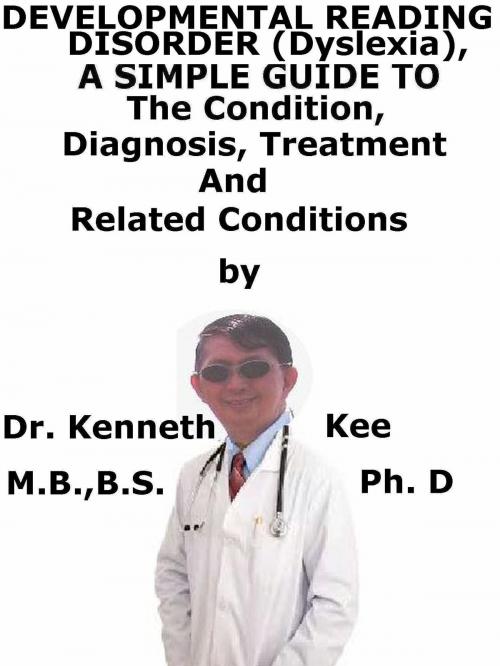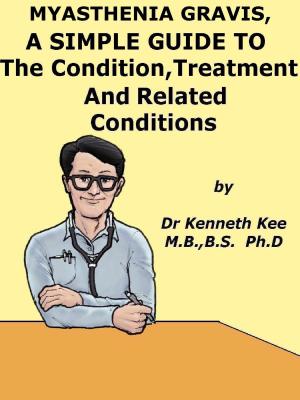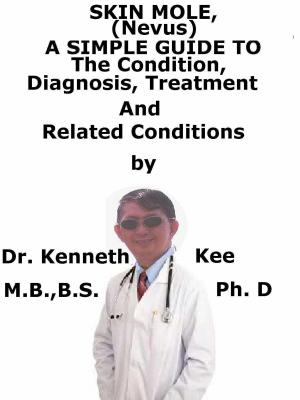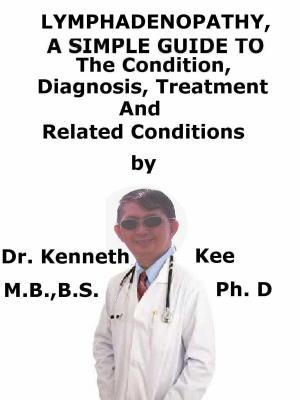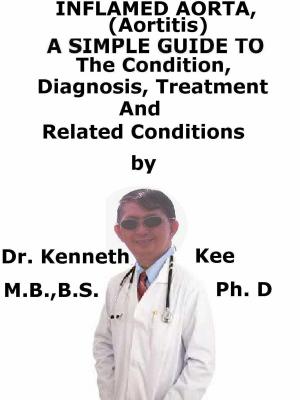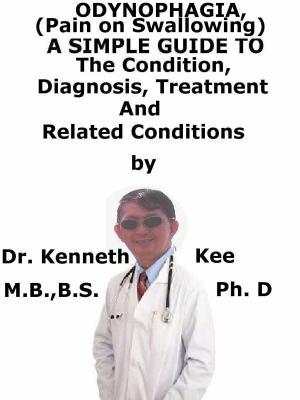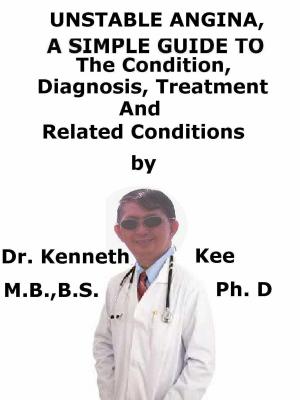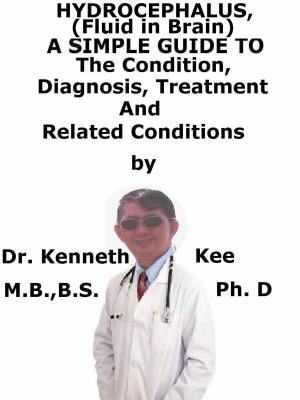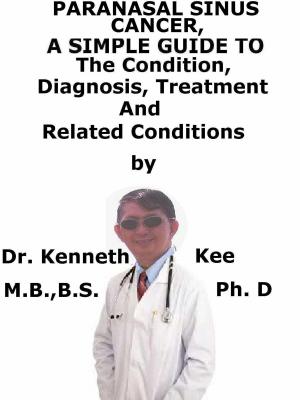Development Reading Disorder, (Dyslexia) A Simple Guide To The Condition, Diagnosis, Treatment And Related Conditions
Nonfiction, Health & Well Being, Medical, Reference, Education & Training, Reference & Language, Education & Teaching, Administration| Author: | Kenneth Kee | ISBN: | 9780463804728 |
| Publisher: | Kenneth Kee | Publication: | June 7, 2018 |
| Imprint: | Smashwords Edition | Language: | English |
| Author: | Kenneth Kee |
| ISBN: | 9780463804728 |
| Publisher: | Kenneth Kee |
| Publication: | June 7, 2018 |
| Imprint: | Smashwords Edition |
| Language: | English |
This book describes Development Reading Disorder (Dyslexia), Diagnosis and Treatment and Related Diseases
Developmental reading disorder (Dyslexia) is an inherited medical disorder that makes it very difficult to read, write, and spell in the native language in spite of having normal intelligence.
Developmental reading disorder (Dyslexia) is typically featured by difficulty with learning to read fluently and with accurate understanding.
Developmental reading disorder (Dyslexia) is a serious impairment in development of reading or spelling skills not explained by general intellectual ability, inadequate schooling or visual perceptual capacity to recognize and process certain symbols.
Developmental reading disorder (Dyslexia) is not the result of lack of motivation, sensory impairment, inadequate instructional or environmental opportunities, or other limiting disorders, but may occur together with these disorders.
Even though Developmental reading disorder (dyslexia) is life long, patients with dyslexia frequently react successfully to timely and proper intervention.
Developmental reading disorder is a brain-based form of learning disability that specifically impairs a person's ability to read.
These patients normally read at levels considerably lower than expected in spite of having normal intelligence.
Even though the Developmental reading disorder differs from person to person, frequent typical features among people with dyslexia are difficulty with spelling, phonological processing (manipulation of sounds), and rapid visual-verbal responding.
Developmental reading disorder (DRD) is the most frequent learning disability.
-
It is a hereditary problem with a family history of language problems.
-
The central nervous system has a deficit defect in the interpretation of graphic symbols.
-
Dyslexia occurs when there is a problem in areas of the cortex that assist in interpreting language.
-
This disorder is a specific information processing problem that does not interfere with the person's ability to think or to understand complex ideas.
-
The majority of patients with Dyslexia have normal intelligence, and many have above-average intelligence.
-
Dyslexia may appear in combination with developmental writing disorder and developmental arithmetic disorder.
Symptoms:
-
Difficulty in determining the meaning of a simple sentence
-
Difficulty in learning to recognize written words
-
Difficulty in rhyming
-
Dyslexia may occur in combination with writing or math learning problems.
Diagnosis is based on:
-
Family history of Dyslexia and his or her developmental, social, and school performance
-
Physical and neurological exam
-
Eye and hearing tests
-
Psychological and educational testing
Treatment uses a number of teaching methods to help the child read better.
These methods are:
-
Instructing how letters are linked to sounds to make words.
-
Having the child read aloud with a teacher's help
-
Educating the child to listen to and repeat instructions.
Medicines and counseling normally are not a part of treatment for dyslexia.
Dyslexia is a lifelong disability and need a planned education.
TABLE OF CONTENT
Introduction
Chapter 1 Dyslexia
Chapter 2 Causes
Chapter 3 Symptoms
Chapter 4 Diagnosis
Chapter 5 Treatment
Chapter 6 Prognosis
Chapter 7 Oppositional Defiant Behavior
Chapter 8 Delayed Learning
Epilogue
This book describes Development Reading Disorder (Dyslexia), Diagnosis and Treatment and Related Diseases
Developmental reading disorder (Dyslexia) is an inherited medical disorder that makes it very difficult to read, write, and spell in the native language in spite of having normal intelligence.
Developmental reading disorder (Dyslexia) is typically featured by difficulty with learning to read fluently and with accurate understanding.
Developmental reading disorder (Dyslexia) is a serious impairment in development of reading or spelling skills not explained by general intellectual ability, inadequate schooling or visual perceptual capacity to recognize and process certain symbols.
Developmental reading disorder (Dyslexia) is not the result of lack of motivation, sensory impairment, inadequate instructional or environmental opportunities, or other limiting disorders, but may occur together with these disorders.
Even though Developmental reading disorder (dyslexia) is life long, patients with dyslexia frequently react successfully to timely and proper intervention.
Developmental reading disorder is a brain-based form of learning disability that specifically impairs a person's ability to read.
These patients normally read at levels considerably lower than expected in spite of having normal intelligence.
Even though the Developmental reading disorder differs from person to person, frequent typical features among people with dyslexia are difficulty with spelling, phonological processing (manipulation of sounds), and rapid visual-verbal responding.
Developmental reading disorder (DRD) is the most frequent learning disability.
-
It is a hereditary problem with a family history of language problems.
-
The central nervous system has a deficit defect in the interpretation of graphic symbols.
-
Dyslexia occurs when there is a problem in areas of the cortex that assist in interpreting language.
-
This disorder is a specific information processing problem that does not interfere with the person's ability to think or to understand complex ideas.
-
The majority of patients with Dyslexia have normal intelligence, and many have above-average intelligence.
-
Dyslexia may appear in combination with developmental writing disorder and developmental arithmetic disorder.
Symptoms:
-
Difficulty in determining the meaning of a simple sentence
-
Difficulty in learning to recognize written words
-
Difficulty in rhyming
-
Dyslexia may occur in combination with writing or math learning problems.
Diagnosis is based on:
-
Family history of Dyslexia and his or her developmental, social, and school performance
-
Physical and neurological exam
-
Eye and hearing tests
-
Psychological and educational testing
Treatment uses a number of teaching methods to help the child read better.
These methods are:
-
Instructing how letters are linked to sounds to make words.
-
Having the child read aloud with a teacher's help
-
Educating the child to listen to and repeat instructions.
Medicines and counseling normally are not a part of treatment for dyslexia.
Dyslexia is a lifelong disability and need a planned education.
TABLE OF CONTENT
Introduction
Chapter 1 Dyslexia
Chapter 2 Causes
Chapter 3 Symptoms
Chapter 4 Diagnosis
Chapter 5 Treatment
Chapter 6 Prognosis
Chapter 7 Oppositional Defiant Behavior
Chapter 8 Delayed Learning
Epilogue
